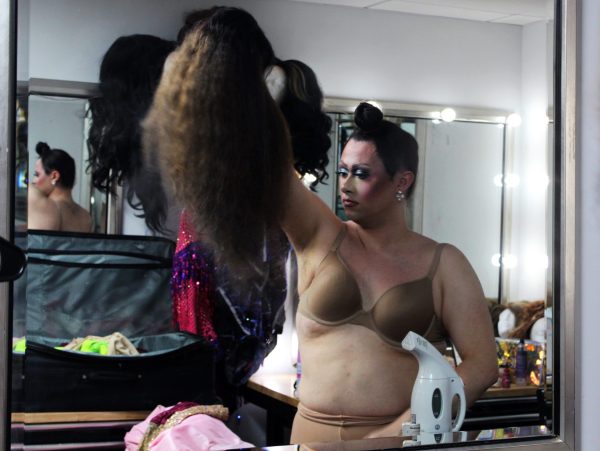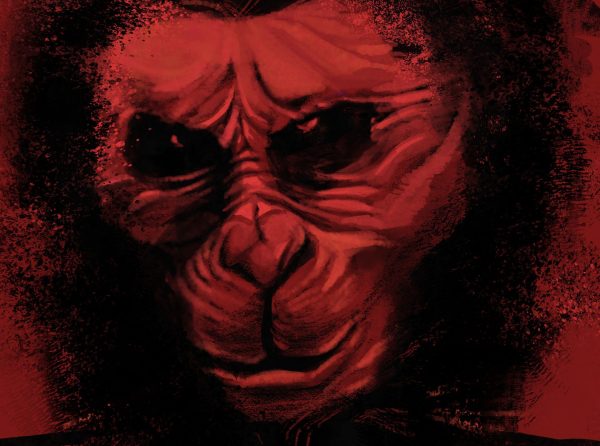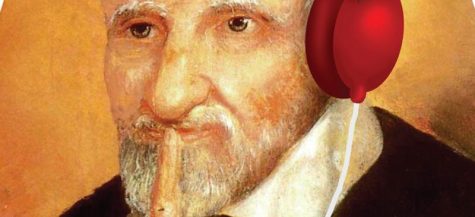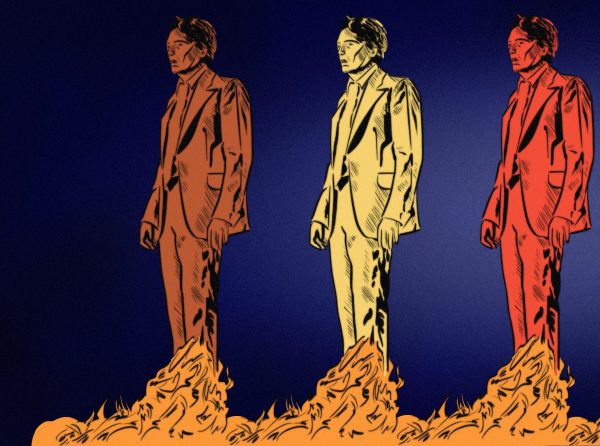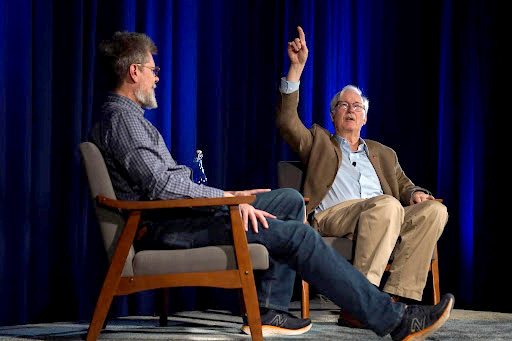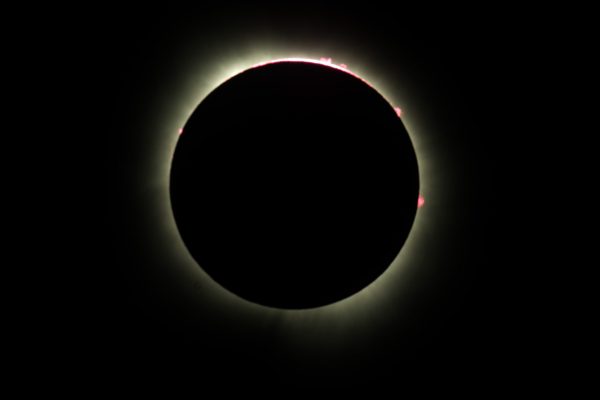‘Belle’ is a dazzling fairytale for the digital age
Mamoru Hosoda’s “Belle” is among the most breathtaking animated films I’ve ever seen. This arresting adaptation of “Beauty and the Beast” was released first in Japan in 2021, but only recently did it make its way to American audiences. It’s a modern retelling, forgoing the traditional setting of the Disney adaptation — “Belle” is a fairytale for the digital age. The great filmmaker Orson Welles once said that the opening scene of a film must seize the audience like a “riderless horse.” But “Belle” careens into the audience like a whole stampede, exploding off of the screen with kaleidoscopic color and awe-inspiring animation. A floating whale carries the superstar diva Belle through an impossible virtual metropolis, tens of thousands of avatars trailing behind her. But this isn’t the beginning of her story.
Following an impressive opening musical number, we’re introduced to a meek high school student named Suzu. Residual anxieties from childhood trauma roughly a decade prior have left her highly unsociable and unmotivated. She registers with “U,” a popular metaverse platform, and manages to amass a staggeringly large following as a singer known to the world only as “Belle.” At her largest concert, with every eye in U fixed upon her, a mysterious delinquent known as the “Dragon” crashes the show, earning the audience’s ire but stealing Belle’s attention. As the situation grows dire, Suzu must race to uncover the true identity of the Dragon in order to protect him — not from a virtual mob which fears a fake monster, but from the very real monster which brought about his persona.
As I mentioned earlier, the animation here is simply of the highest caliber. The film’s fantastical setting allows for a seemingly unending stream of remarkable images — “Belle” embodies “every frame a painting” like few films can. The songs are admittedly hit-or-miss, though that’s entirely on account of my own preference — I can’t deny the quality, and you’ll probably enjoy them more than I did. They lean a little too far into modern pop stylings for my liking, though they’re also in equal parts musically bold and sung with a stunning precision by Kaho Nakamura (I should clarify that I watched the film in Japanese, subtitled).
And as for the story — you know the story. It’s “Beauty and the Beast.” What I will say, though, is that as far as adaptations of timeless stories go, I think that “Belle” is an absolutely ingenious modern reinvention of the tale — it uses its metaverse framing to great thematic effect.
The film is centered around personas — Belle and the Dragon exist as facets of their creators made manifest in virtual space. I’ve been juggling a web of internet personas for close to three-fourths of my life, and I’m very well-acquainted with the nature of online communities. The more I examined the film, the more I was shocked to see a lot of what I’ve observed through my own experience reflected in it — not with respect to the broad-strokes story, but more so the way it captures the subtleties of the persona in the virtual space.
Like my favorite animated film, Hayao Miyazaki’s “Porco Rosso,” its depth is masked by a dizzying charm. In my notes is a list of many things in the film which I took issue with, but I couldn’t even be bothered to mention them here. None of my nitpicks could inflict anything more than a papercut upon this anime colossus — it’s a film which is difficult not to enjoy. As the first film of Hosuda’s which I’ve seen, I’m now eager to explore his filmography. “Belle” is outstanding, and one of my easiest recommendations.



